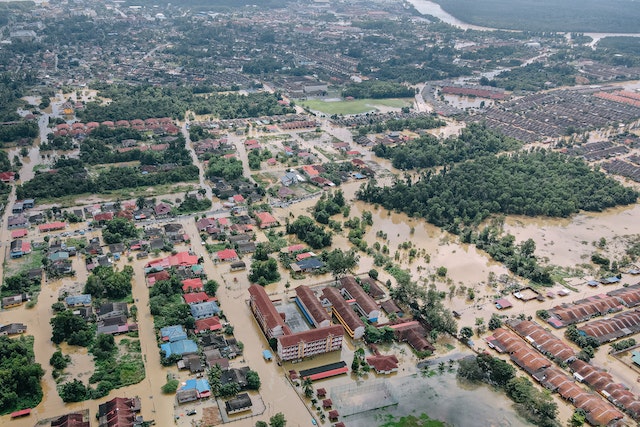Flood season is coming up fast and they are more dangerous than many people think. It kills hundreds of people every year. Being informed and prepared before a flood happens can make the difference between life and death. It doesn’t have to be raining in your area for a flood to impact you. You could be at risk even if you’ve never seen floodwaters near your home. You should make a flood plan now and make sure everyone in your household knows what to do if there is flooding.
Before the Flood
While some natural disasters occur with little or no warning, we are typically alerted to flooding and have some time to prepare or get to safety. When it comes to flooding, it is important to know your risks as some areas are more prone to flooding than others. If you live in a flood zone, you need to take additional measures to protect your home and your family.
Create a Plan
You will have a better chance of surviving if everyone in your household agrees on a flood plan you write down. The plan should include: When you will leave, emergency kit location, where to evacuate family to, where to shelter if you can’t leave the property, who turns off electricity, and gas and water supplies.
Get an Emergency Kit
Your emergency kit must be kept in a waterproof plastic container or heavy-duty water-resistant bag. You may be without power, water and other essential services for several days after a flood.
- Put emergency supplies in a safe and easy-to-reach place.
- Move valuables and food upstairs or to the safest place in your home.
- Close windows, and draw the curtains to protect against flying glass.
- Tell neighbours, family or friends if you’re going to stay somewhere else during the bad weather so they don’t risk their lives looking for you
- Park your car in the safest place possible: away from trees and high walls.
- Important documents such as birth certificates, passports, marriage licenses, and deeds need to be protected against water damage.
During a flood
During severe weather, you should stay home and keep to the safest part of the building – away from windows. Listen to the radio, TV and/or social media for updates and information. Don’t go out unless you really have to, and make sure someone knows where you are going and how long you will be. If your property is starting to flood, or if you are being told to evacuate, turn off your electrical supply. Always obey road closures and check road conditions if there are no signs around. No matter how well you know the roads, if a road is flooded forget it.
Evacuate Dangerous Areas Immediately
If a flood is threatening your home or property you should relocate to a safer place, if it is safe to do so. Leaving at the last minute is very dangerous because your planned route may be blocked by fast-flowing water. You may have only a short time to escape. Act quickly, utilizing your planned route. Head to designated shelters during flood warnings. When emergency services tell you to leave, listen to their instructions. Leave everything behind. Don’t stop to move valuables. Grab your emergency kit and go. Always follow the instructions given by your local emergency management officials.
Stay Out of Moving Water
Avoid crossing through water. Water up to your ankles is enough to be dangerous. You cannot see how deep the water is the rest of the way. If you have to go through water, bring a stick. Use it to measure the water’s depth and feel for stable ground. If floodwaters rise around your car but the water is not moving, you should abandon the car and move to higher ground. Do not leave the car and enter moving water. It’s also important to avoid camping or parking along streams, rivers, and creeks during heavy rainfall. These areas can flood quickly and with little warning.
After A Flood
After a flood, return home only when authorities say it is safe. Floodwaters can persist for some time even after the immediate threat is gone. Do not attempt to drive through areas that are still flooded, and avoid standing water as it may be electrically charged from underground or downed power lines. Ensure to clean your home thoroughly before going back in. Open up all the doors and windows. Scrub affected areas with hot water and bleach.
Please note: If you are religious, praying to God can help calm you down, but please act quickly and follow safety protocol. As the cliche goes, Heavens help those who help themselves.
Sources: Governemnt of Western Australia , EmergencyEssentials

